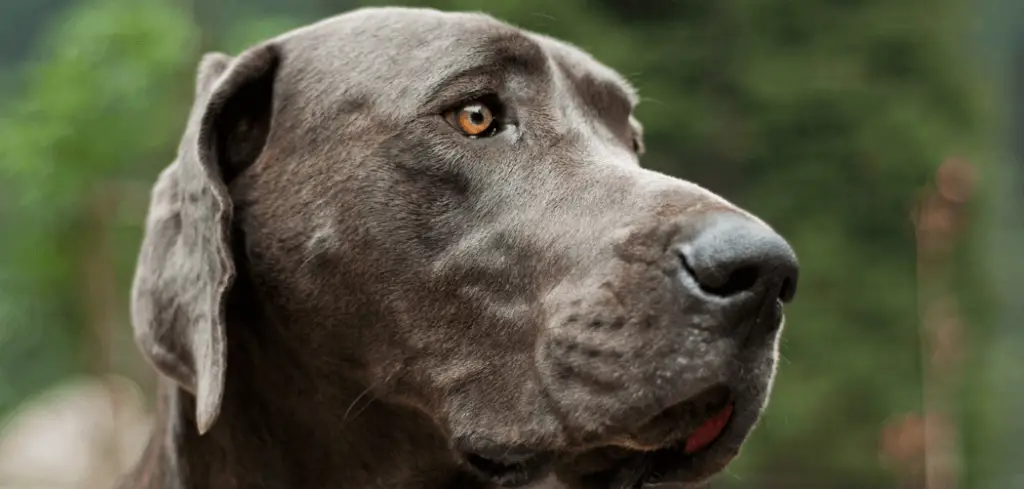When an old dog is not eating and breathing heavy, it can indicate serious respiratory, cardiovascular, or systemic health issues.
Loss of appetite combined with labored breathing can quickly lead to weakness, oxygen deprivation, and other complications.
We outline the common reasons why an old dog may not be eating and breathing heavily, what you can do at home, and when to seek veterinary help.
Old Dog Not Eating and Breathing Heavy — Why It Happens
An old dog not eating and breathing heavily is often a sign of a serious health issue. Loss of appetite combined with labored or heavy breathing can point to heart disease, lung problems, pain, infections, or organ failure. Sometimes, conditions like heatstroke, fluid buildup in the chest, or advanced illness can also cause these symptoms.
Because this combination of not eating and breathing difficulty is dangerous, it should be treated as an emergency.

Old Dog Not Eating and Breathing Heavily: Common Causes
Congestive Heart Failure
Heart disease can cause fluid accumulation in the lungs, leading to labored breathing and reduced appetite.
Signs may include coughing, lethargy, rapid breathing, or swollen abdomen. Veterinary care is essential for diagnosis, medications, and dietary adjustments to reduce fluid overload and improve comfort.
Read more: Old Dog Not Eating and Lethargic (Energy and appetite concerns)
Respiratory Infections
Pneumonia, bronchitis, or other infections can reduce appetite and increase respiratory effort.
Older dogs may cough, show nasal discharge, or appear fatigued. Prompt veterinary treatment, including antibiotics or supportive care, is critical to prevent severe respiratory compromise.
Anemia
Low red blood cell counts can decrease oxygen delivery, causing heavy breathing and low energy.
Signs include pale gums, weakness, and reduced appetite. Identifying the underlying cause, such as chronic disease or blood loss, is essential for treatment.
Lung Disease
Chronic conditions like bronchitis, tumors, or pulmonary fibrosis can cause labored breathing and appetite loss.
Dogs may show rapid or shallow breathing, coughing, or exercise intolerance. Veterinary assessment can determine severity and guide appropriate treatment.
Pain or Stress
Pain from arthritis, injury, or illness can reduce appetite and exacerbate rapid breathing.
Signs include restlessness, whining, or reluctance to move. Pain management and a calm environment can improve comfort and encourage eating.
Metabolic Disorders
Conditions such as kidney or liver disease can indirectly cause labored breathing and loss of appetite.
Toxin buildup, fluid retention, or anemia may contribute to respiratory distress. Early veterinary evaluation is critical to prevent worsening systemic issues.
What to Do If Your Old Dog Is Not Eating and Breathing Heavily
Provide a calm, cool, and well-ventilated environment to ease breathing.
Ensure water is accessible to prevent dehydration, and encourage small, bland meals if tolerated.
Monitor breathing rate, effort, and gum color closely. Avoid stressful activities or exertion that could worsen labored breathing.
Keep a log of appetite, water intake, and breathing patterns to assist your veterinarian in diagnosis and treatment.
When to Call or Visit Your Vet
Immediate veterinary attention is required if your dog:
Shows labored, rapid, or open-mouth breathing
Refuses food and water
Appears weak, pale, or collapses
Exhibits coughing, vomiting, or swollen abdomen
Early evaluation can identify heart disease, lung disease, anemia, infection, or metabolic disorders and provide life-saving treatment.
Read more: Old Dog Not Eating (Causes and what to do)
Key Takeaway
When an old dog is not eating and breathing heavy, it often indicates serious underlying health issues such as heart, lung, or metabolic disorders.
Supportive care includes providing a calm, well-ventilated environment, accessible water, and monitoring breathing closely.
Persistent loss of appetite with labored breathing requires immediate veterinary evaluation to prevent complications and maintain your senior dog’s comfort and safety.
